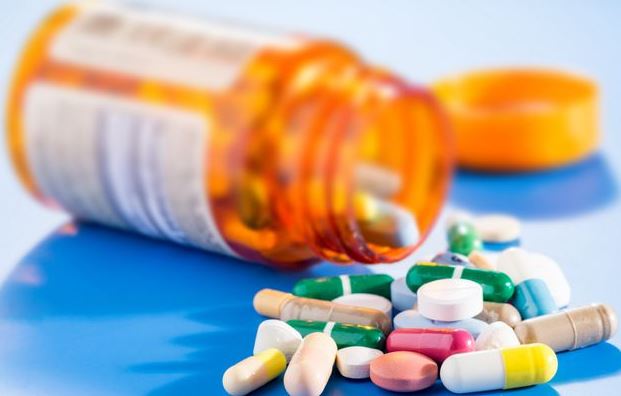A Review Study on Ancient Drug - Mukta
DOI:
https://doi.org/10.21760/jaims.10.4.35Keywords:
Rasa, Shastra, Ratna, Mukta, PearlAbstract
For thousands of years, Rasa Shastra, also known as Ancient Indian alchemy, has been a part of the medical field that has benefited humanity. In Rasa Shastra, the Ancient Alchemists were particularly interested in Rasa, which means Mercury. Rasa Shastra also studies and prepares different herbo-mineral compounds. And the safe use of Mercurial preparations as medicines from many years, Rasa Shastra also deals with study and the preparation of other herbo-mineral chemicals using various plant drugs and animal origin. One of the drugs, the most widely used in Rasa Shastra is Mukta or Pearl. There are various categories or groups of drugs (Varga) used in Rasa Shastra viz. Maharasas, Uparasas etc. and Mukta is divided under the Ratna (precious treasures) Varga. Mukta, also known as Pearl, is one of the medications that is most frequently utilized in Rasa Shastra. Mukta is a spherical, solid black, dazzling white fish that lives in the water. Its advantageous appearance makes it a common ingredient in apparel, cosmetics, and jewellery. It is created by encircling the center nucleus with many layers of conchiolin and calcium carbonate. Classics of Rasa Shastra state that Madhura, Sheeta, and Laghu belong to Mukta. Additionally, it is frequently used as a potent Pitta Shamaka. Procedures for purification and Pishti are also mentioned in the classics of Rasa Shastra, which makes pearls extremely effective for curing illnesses. In Amlapitta, Jwara and Daha, Mukta is widely used in various forms. The aim of the study is to have a critical review on the conceptual study of Mukta.
Downloads
References
Murthy PHC. Rasa Shastra - The Mercurial System. Varanasi: Chaukhamba Publication; 2008.
Mishra S. Ayurvediya Rasashastra. Varanasi: Chaukhamba Orientalia Publication; 2010.
Sharma S. Rasatarangini. Prasadani Sanskrit commentary by Shri Haridutta Shastri, Rasa Vigyan Hindi commentary by Kashinath Shastri. 11th ed. Delhi: Motilal Banarsidass; 2004. 23/64-65.
Sharma S. Rasatarangini. Prasadani Sanskrit commentary by Shri Haridutta Shastri, Rasa Vigyan Hindi commentary by Kashinath Shastri. 11th ed. Delhi: Motilal Banarsidass; 2004. 23/66.
Murthy PHC. Rasashastra - The Mercurial System. Varanasi: Chaukhamba Publication; 2008.
Mishra GS. Ayurveda Prakasha. Varanasi: Chaukhamba Publication; 1962.
Sharma S. Rasatarangini. Prasadani Sanskrit commentary by Shri Haridutta Shastri, Rasa Vigyan Hindi commentary by Kashinath Shastri. 11th ed. Delhi: Motilal Banarsidass; 2004. 13/69.
Sharma S. Rasatarangini. Prasadani Sanskrit commentary by Shri Haridutta Shastri, Rasa Vigyan Hindi commentary by Kashinath Shastri. 11th ed. Delhi: Motilal Banarsidass; 2004. 13/68.
Sharma S. Rasatarangini. Prasadani Sanskrit commentary by Shri Haridutta Shastri, Rasa Vigyan Hindi commentary by Kashinath Shastri. 11th ed. Delhi: Motilal Banarsidass; 2004. 13/67.
Sharma S. Rasatarangini. Prasadani Sanskrit commentary by Shri Haridutta Shastri, Rasa Vigyan Hindi commentary by Kashinath Shastri. 11th ed. Delhi: Motilal Banarsidass; 2004. 13/70-71.
Sharma S. Rasatarangini. Prasadani Sanskrit commentary by Shri Haridutta Shastri, Rasa Vigyan Hindi commentary by Kashinath Shastri. 11th ed. Delhi: Motilal Banarsidass; 2004. 13/72-74.
Joshi D. Rasa Shastra. English ed. Varanasi: Chaukhamba Orientalia; 2010. p. 295-6.
Dubey N, Dubey N, Mehta RS, Saluja AK, Jain DK. Antiulcer activity of a traditional pearl preparation: Mukta Bhasma. Res J Pharm Tech. 2009;2(2):287-9.
Parmar KK, Galibl B, Patgiri BJ. Pharmaceutical standardization of Jala Shukti Bhasma and Mukta Shukti Bhasma. Ayu. 2016;33(1):137-41.
Adhav KP, Lahare KH. Preparation of Mukta Bhasma by two different methods and its comparative analytical study. Int J Ayur Pharm Res. 2014;2(5):76-82.
Acharya YT. Rasamrutam, compiled by Gautam DS. Varanasi: Chaukhamba Surabharati Prakashan; 2011. 9/137-139. p. 136.
Bhatta G. Rasendrasarasangraha. Rasayani commentary by Mishra N, compiled by Pandeya R. Delhi: Chaukhamba Sanskrit Pratishthan; 2011. 5/82-88. p. 436.
Das G. Bhaisajyaratnavali. Vidyotini Hindi commentary by Mishra B, edited by Shastri R. Varanasi: Chaukhamba Prakashan; 2008. 32/116-120. p. 681.
Anonymous. Rasatantrasara Siddha Prayoga Sangraha. Part I. Rajasthan: Krishna Gopal Ayurved Bhavan; 2012. 21st ed. Kharaliya Rasayana. p. 223.
Bhatta G. Rasendrasarasangraha. Rasayani commentary by Mishra N, compiled by Pandeya R. Delhi: Chaukhamba Sanskrit Pratishthan; 2011. 5/80-81. p. 435.
Das G. Bhaisajyaratnavali. Vidyotini Hindi commentary by Mishra B, edited by Shastri R. Varanasi: Chaukhamba Prakashan; 2008. 26/145-148. p. 543.
Das G. Bhaisajyaratnavali. Vidyotini Hindi commentary by Mishra B, edited by Shastri R. Varanasi: Chaukhamba Prakashan; 2008. 40/100-114. p. 763.
Das G. Bhaisajyaratnavali. Vidyotini Hindi commentary by Mishra B, edited by Shastri R. Varanasi: Chaukhamba Prakashan; 2008. 8/493-500. p. 281.
Das G. Bhaisajyaratnavali. Vidyotini Hindi commentary by Mishra B, edited by Shastri R. Varanasi: Chaukhamba Prakashan; 2008. 26/213-218. p. 549.
Dubey N, Dubey N, Mehta RS, Saluja AK, Jain DK. Antiulcer activity of a traditional pearl preparation: Mukta Bhasma. Res J Pharm Tech. 2009;2(2):287-9.
Parmar KK, Galibl B, Patgiri BJ. Pharmaceutical standardization of Jala Shukti Bhasma and Mukta Shukti Bhasma. Ayu. 2016;33(1):137-41.
Adhav KP, Lahare KH. Preparation of Mukta Bhasma by two different methods and its comparative analytical study. Int J Ayur Pharm Res. 2014;2(5):76-82.















